Sponsored by BoysStuff.co.uk

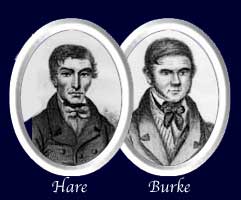
In the early 1800s, Britain saw an increase in the number of students wanting anatomical training, and classrooms of medical colleges swelled to capacity. Most classes could easily be taught in lecture halls to many students, but anatomy classes had the special requirement of a corpse for lecture and demonstration purposes.
Until the 19th century, Britain’s laws specified that the only bodies that could be used in these classes were those of recently executed criminals. Of course in the 1800s executions were a weekly occurance, however even this could not provide suffient bodies to supply all the anatomy classes of the times.
The practice of Grave Robbing soon became the regular occupation of some underworld characters. It was reported that Grave robbers could open a grave, remove a body and restore the soil between patrols of the night watch.... Relatives of the subject could mourn by the grave the following day, unaware that their loved one was gracing some anatomy slab in Edinburgh.
Of course doctors and their assistants most likely suspected that the bodies were from graves, but generally said nothing in order to keep the anatomy classes full of paying students.
Regardless of their soiled reputation, it must be said that neither Burke nor Hare, either together or alone, became involved in Grave robbing or body snatching. Burke and Hare developed their own methods of delivering the required bodies.
WilliamBurke
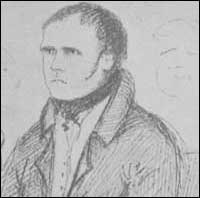
Burke was 36 years of age, and born in the parish of Orrey, county Tyrone in Ireland. He served seven years in the army, most of that time as an officer's servant in the Donegal Militia. He was married at Ballinha, in the county of Mayo, when in the army, but left his wife and two children in Ireland. She would not come to Scotland with him. He has often wrote to her, but got no answer. He came to Scotland to work at the Union Canal. He resided for about two years in Peebles, and worked as a labourer. He also worked as weaver for 18 months, and as a baker for five months. He learned to mend shoes, as a cobbler, with a man he lodged with in Leith.
While lodging at Maddiston during his work on the Canal, Burke met Helen McDougal, a native Scot who was then, after separating from her legal husband, living with a man with whom she had two children. Burke and McDougal left Maddiston together after the Canal work was done, apparently leaving the two children behind, and the couple journeyed to Peebles and Leith and then Edinburgh, scraping out a living by working on farms, selling old clothes, and mending shoes.
William Hare
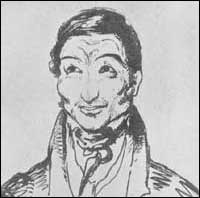
William Hare had also journeyed from Ireland to Scotland to work on the Union Canal, although it is not known if he ever encountered Burke there. After the completion of the Canal, Hare went to Edinburgh and found cheap lodgings in the area known as West Port at the boarding house of a man named Logue and his wife Margaret, who was also an Irish native. When Logue died in 1826, Hare provided enough comfort to the widowed Margaret that they were soon living as common-law husband and wife and running the lodging house as a married couple. Hare was described in an 1829 issue of Blackwood’s Magazine as: “the most brutal man ever subjected to my sight, and at first look seemingly an idiot. His face when he laughed – which he did often – collapsed into a hollow, shooting up ghastlily from chin to cheek bone – all steeped in a sullenness and squalor…native to the almost deformed face of the leering miscreant…so utterly loathsome was the whole look of the reptile.
When Burke and McDougal moved to Edinburgh, they took up residence in West Port and by chance encountered Margaret Hare one day, who invited them back to the boarding house and introduced them to her husband. Soon after, Burke and McDougal became paying lodgers of the Hares. The four of them would quarrel often and could never be described as friends, but they became permanently linked by a shared fondness for whisky and the desire to make easy money – no matter the method.
The Beginning.
In November of 1827, one of Hare’s lodgers, an old army pensioner named Donald, fell ill and died. Hare was not concerned about the man’s actual death, but was outraged that Donald had passed away owing £4 in rent arrears.
After the authorities had been called to fetch the man’s body, Hare came up with a plan to get the money Donald owed him. With Burke’s assistance, they took Donald’s body out of the coffin and replaced it with an equal weight of tree bark and hid the corpse until the coffin had been taken away. The two then went off to find the offices of anatomy instructor Professor Munro, but, in asking directions, were redirected to the classrooms of Professor Robert Knox. Knox’s assistants said that they were interested in the body, and to bring it back after nightfall.
n November of 1827, one of Hare’s lodgers, an old army pensioner named Donald, fell ill and died. Hare was not concerned about the man’s actual death, but was outraged that Donald had passed away owing £4 in rent.
After the authorities had been called to fetch the man’s body, Hare came up with a plan to get the money Donald owed him. With Burke’s assistance, they took Donald’s body out of the coffin and replaced it with an equal weight of tree bark and hid the corpse until the coffin had been taken away. The two then went off to find the offices of anatomy instructor Professor Munro, but, in asking directions, were redirected to the classrooms of Professor Robert Knox. Knox’s assistants said that they were interested in the body, and to bring it after nightfall.
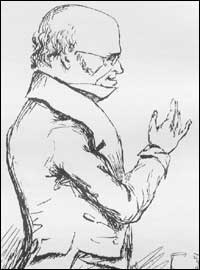
That night Knox’s doorman answered the bell to find Burke and Hare and a large sack. Three of Knox’s assistants examined the body and offered to pay a little over £7 for it.
In 1829 a notebook was discovered in a tin box buried under a flagstone near Burke's house. It seems that William Burke kept a written record and account of the murders and the money he made.
Burkes Notebook records:
Christmas 1827.—Sold the body of Donald the pensioner, in Surgeon Square, for £7,10.
Paid William Hare, Tanner's Close, £4,5.
For myself, £3,5.
This was just the start of Burke & Hares career as body sellers. Now they both recognised an easy way to earn money, for very little effort. Only the next time, they would not wait for natural causes to provide a body.
Another of Hare's lodger's, Jospeh, fell ill (although not seriously) Burke and Hare decided to take it upon themselves to end his suffering whilst seeing another opportunity for easy money and so their murderous career began.
Their chosen method of murder was to restrict their victim's breathing by covering the nose and mouth while the other restrained them. This left no suspicious marks on the body and provided the anatomy students with fresh undamaged bodies. This method later became known as 'Burking'.
They murdered at least 16 people in just under a year before being caught, although the figure could have been as high as 30. At first they deliberately preyed on people who wouldn't be known or recognised but their greed for easy money combined with their sheer laziness lead to their downfall and before long they regarded almost anyone was a potential victim. They even contemplated killing and selling their own partner's Helen and Margaret if they were ever short of money.
Their last victim was Marjory Campbell Docherty. Burke lured her into the lodging house by claiming that his mother was also a Docherty, but he had to wait because of James and Ann Gray who were lodging with them. The Grays left for the night and neighbours heard the noise of a struggle.
The next day, Ann Gray became suspicious when Burke would not let her approach a bed where she had left her stockings. When the Grays were left alone in the house in the early evening, they checked the bed and found Docherty's body under it. On their way to alert the police, they ran into MacDougal who tried to bribe them with an offer of £10 a week. They refused.
MacDougal and Margaret Hare alerted their spouses, and Burke and Hare took the body out of the house before the police arrived. However, under questioning, Burke claimed that Docherty had left at 7:00 am, but then MacDougal claimed that she had left in the evening. The police arrested them. An anonymous tip-off led them to Knox's classroom where they found Docherty's body. MacDougal and Margaret Hare were arrested soon thereafter. The murder spree had lasted only eleven months.
The case provoked a massive outcry, with the public clamouring to have Burke and his mistress, Hare and his wife, and Dr Knox hanged. However, the police had very little evidence of murder - there were no physical signs on Docherty's body as she, in common with most of the other victims, had been smothered, and they didn't want the case to result in lesser charges, or an acquittal. Therefore they made a deal with Hare that, if he were to become a King's Witness and tell all in court, he and his wife would be released, provided Burke was convicted.
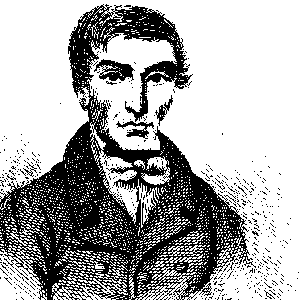
The trial, which started on Christmas Eve 1828, lasted only until the next morning. Hare's evidence sent Burke to the gallows, although Burke's mistress received a not proven verdict (Scots Law only). Before his death, a month later, Burke confessed to 16 murders, but always denied that they ever robbed graves. On the day of his hanging thousands of people of all classes turned out to watch the hated man's execution.
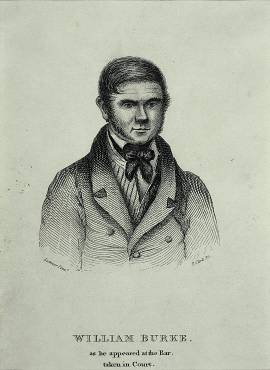
When he died the crowd cheered, and when his body was cut down there was a stampede as people tried to reach it. After a period in which it was laid on a slab in a public gallery, so all who desired to do so could see, Burke's fate was to have his own body donated to medical science - it was dissected in a lecture, which drew a full house and it is rumoured that some students stole pieces of his skin, having them made into wallets or covers for pocket books. After this, his skeleton was displayed in the Medical School he had kept so well supplied - the bones are still there today.
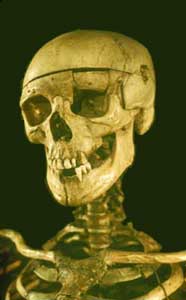
There was much public anger at the fact that Hare was allowed to be let off 'Scot free' but despite attempts to bring further charges against him by James Wilson's mother, he was released in February 1829 and escaped to England via the postal coach. There were stories his identity was discovered and baying mobs threw him into a pit of lime and he spent his final days as a blind beggar in London.
Both Helen and Margaret were mobbed everywhere they went and it is rumoured that Helen escaped to Australia where she died in 1868. Margaret is said to have fled to Ireland after a lucky escape from mobs in Glasgow.
Although Professor Knox actively encouraged the pair to supply as many body's as possible, he was also aquitted for his part in the crimes, but his reputation made it difficult to continiue his work in Edinburgh and he eventually moved to London.
| © RIYAN Productions |
